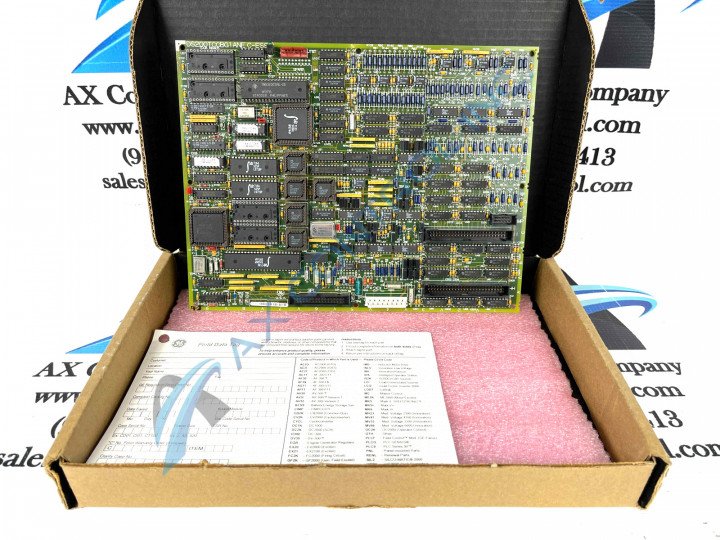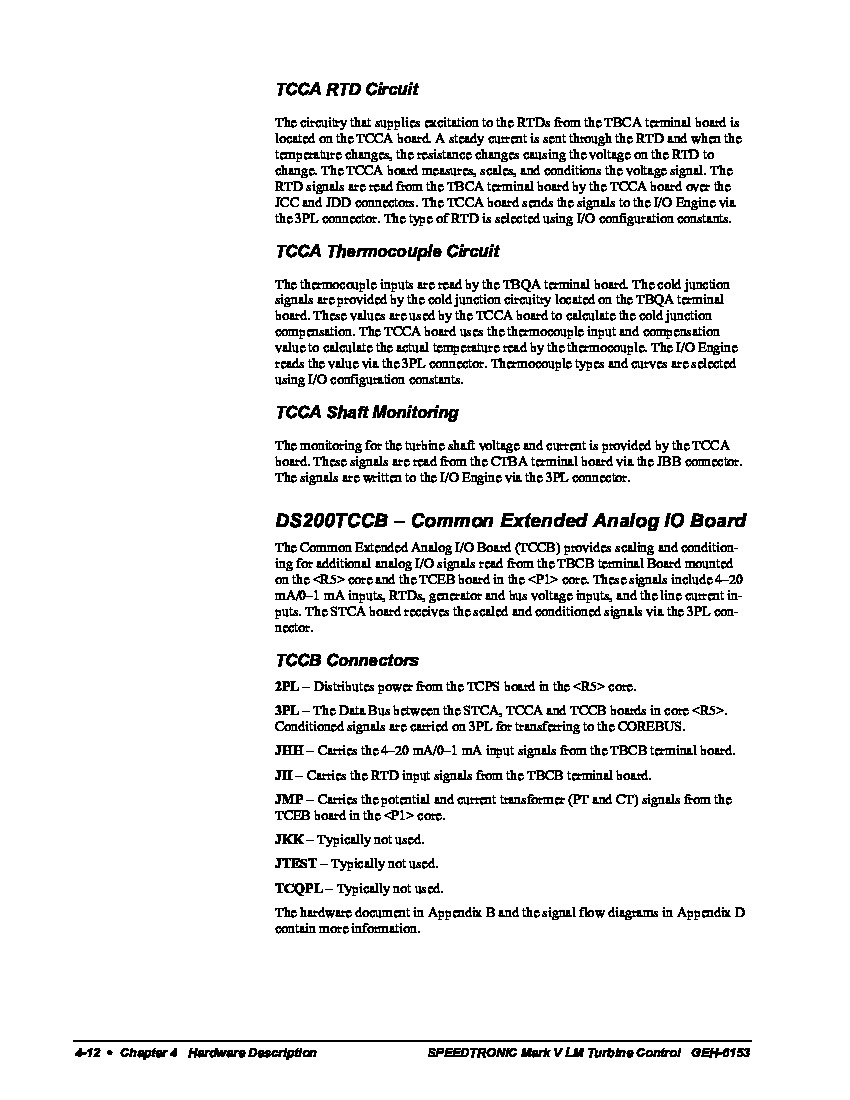About the DS200TCCBG1ANE
This DS200TCCBG1ANE printed circuit board product offering from General Electric was created for use in their Mark V Series of turbine control systems and turbine control system component parts. The Mark V Series that this DS200TCCBG1ANE product offering belongs to is considered a legacy series, as it is no longer in active production by its original manufacturer, General Electric, While the Mark V Series that this DS200TCCBG1ANE printed circuit board or PCB for short belongs to is largely an obsolete legacy product series, it is also considered one of the newer product series developed by General Electric making use of their patented Speedtronic technology. This DS200TCCBG1ANE PCB is really better-definable as a Common Extended Analog IO Board, the original functional description that it is referred to as in factory-printed General Electric and Mark V Series instructional manuals. As alluded to above, the Mark V Series that this DS200TCCBG1ANE Common Extended Analog IO Board belongs to has specific applications in the control system assemblies of gas, steam, and wind turbines. While this DS200TCCBG1ANE printed circuit board may retain its original intended Mark V Series function as a Common Extended Analog IO Board, it is not the original Common Extended Analog IO Board developed for the Mark V; that would be the DS200TCCBG1 PCB missing this DS200TCCBG1ANE product's three-fold revision history.
Hardware Tips and Specifications
The GE I/O TC2000 Analog Board DS200TCCBG1ANE features one 80196 microprocessor and multiple PROM modules. It also contains one LED and 2 50-pin connectors. The LED is visible from the side view of the board. The IDs for the 50-pin connectors are JCC and JDD. The LED is useful for indicating if the board is receiving power and is processing information. However there are troubleshooting measures you can take to verify that the board is working as designed. Another source of information is the drive diagnostic tools that give a detailed report on all the processing of the boards. It also lists any warning or error messages issued by the drive. It also lists any trip conditions that will automatically shut down the drive. For example, if sensors indicate the drive is overheated, an over temperature condition is issued and the drive is automatically shutdown. The reports also describe in detail the activity of the boards and of the motor and other moving parts in the drive. Several different relevant connectors exist attached to the base circuit board of this General Electric Mark V Series product offering. For starters, the DS200TCCBG1ANE printed circuit board makes use of a 2PL-labeled connector for power distribution from the TCPS board in the Mark V Series drive assembly's R core. Some of the other crucial connectors in the assembly of this DS200TCCBG1ANE Common Extended Analog IO Board include:
- The 3PL COREBUS STCA, TCCA, and TTCB Board Connector
- The JHH Input Signal TBCB Board Connector
- The JII RTD Input Signal TBCB Board Connector
- The JMP TB and CB Signal TCEB Board Connector
- The JKK Connector
- The JTEST Connector
- The TCQPL Connector
As you have probably noticed, all of the different connector types made available to the assembly of this DS200TCCBG1ANE printed circuit board product offering have been named through a combination of their specific applications and interface potentials. The last three JKK, JTEST, and TCQPL Connectors are not functionally named, as they typically go unused during normative function of the DS200TCCBG1ANE Common Extended Analog IO Board. This DS200TCCBG1ANE PCB product offering offers a series of similarly-named manually-moveable hardware jumpers in its assembly; the specific applications and positions of these jumpers is described in detail in the instructional manual attached above. Before making a final purchase decision on this DS200TCCBG1ANE PCB product, it is important to be cognizant of the fact that its originally-introduced performance specifications and dimensions have no doubt been altered as a function of its three significant product revisions.














